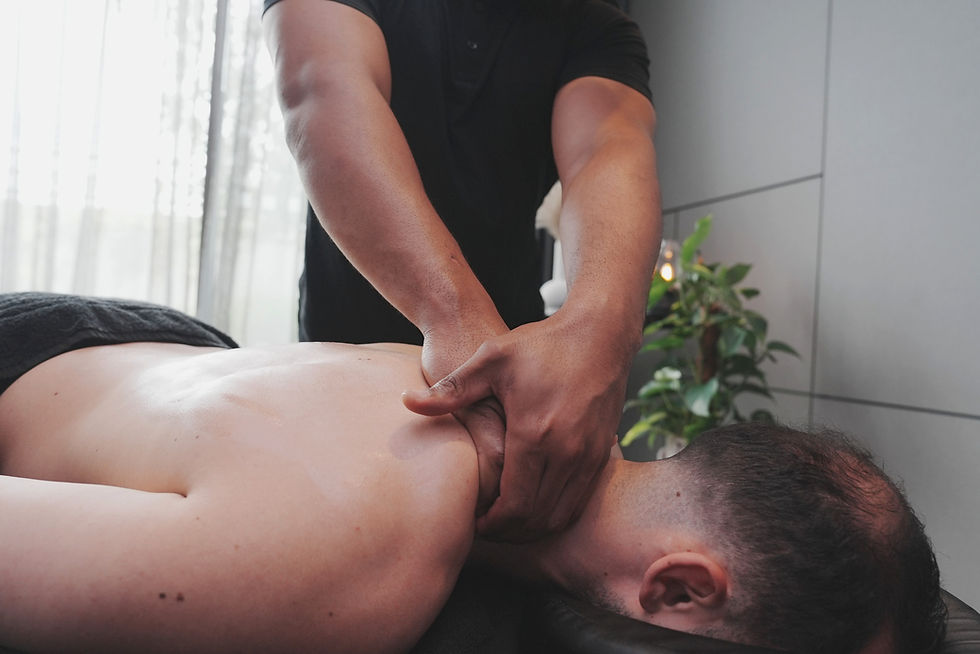The Benefits of Dry Cupping Therapy
- Ka-Cie Addison
- Nov 12
- 4 min read
If you’ve ever felt the need to boost your recovery or simply want to try something new for your wellbeing, dry cupping therapy might just be the answer. Whether you’re an athlete, someone who loves staying active, or just want to prevent injuries, dry cupping can be a game changer.
What Makes Dry Cupping So Beneficial?
Dry cupping is a therapy where suction cups are placed on the skin to create a vacuum. This suction pulls the skin and underlying tissues upward, increasing blood flow and encouraging healing. It’s a simple process but the effects can be profound.
One of the biggest dry cupping benefits is pain relief. The suction helps to loosen tight muscles and reduce inflammation. Imagine how great it feels when a knot in your shoulder finally releases after a massage, dry cupping works in a similar way but can reach deeper layers of tissue.
Another benefit is improved circulation. When blood flow increases, your body can deliver more oxygen and nutrients to muscles and joints. This speeds up recovery and helps prevent injuries. Plus, it can leave you feeling energised and refreshed.
Dry cupping also promotes relaxation. The gentle pulling sensation can calm your nervous system, reducing stress and anxiety. It’s like giving your body a mini reset.

How Does Dry Cupping Help with Injury Prevention and Recovery?
Injuries can be frustrating, especially when you’re eager to get back to your routine. Dry cupping can be a powerful tool in both preventing injuries and speeding up recovery.
When muscles are tight or overworked, they’re more prone to strains and tears. Dry cupping helps by increasing blood flow to these areas, which reduces muscle stiffness and promotes flexibility. This means your muscles are better prepared to handle physical stress.
For recovery, dry cupping encourages the removal of toxins and waste products from your tissues. This detox effect can reduce soreness and swelling after intense workouts or injuries. Many athletes report feeling less stiffness and quicker healing times after sessions.
It’s also worth noting that dry cupping can improve lymphatic drainage. This helps your body clear out excess fluids and reduce inflammation, which is crucial after injuries.
If you’re dealing with chronic pain or recovering from a specific injury, dry cupping can be a complementary therapy alongside massage or physiotherapy.

How Often Should You Do Dry Cupping?
You might be wondering how frequently you should try dry cupping to get the best results. The answer depends on your individual needs and goals.
For general wellbeing and injury prevention, once every 2 to 4 weeks can be enough to maintain muscle health and circulation. If you’re recovering from an injury or dealing with chronic pain, more frequent sessions might be beneficial, sometimes once a week or every 10 days.
It’s important to listen to your body. After a session, you might notice some redness or mild bruising where the cups were placed. This is normal and usually fades within a few days. If you feel any discomfort, it’s a sign to give yourself more time between treatments.
What Should You Expect During a Dry Cupping Session?
If you’ve never tried dry cupping before, you might be curious about what happens during a session. It’s actually quite straightforward and relaxing.
First, as the therapist, I will clean the area where the cups will be placed. Then, I'll use plastic cups to create suction on your skin. The cups might stay in place for 5 to 20 minutes depending on the treatment plan.
You’ll feel a gentle pulling sensation, which can be a bit strange at first but usually becomes quite soothing. Some people describe it as a warm, tight feeling. The suction helps to lift the skin and increase blood flow.
After the cups are removed, you might see circular marks or light bruising. These are signs that the therapy is working to stimulate circulation and release tension. Don’t worry, these marks are temporary and typically disappear within a week.
Many people find dry cupping sessions deeply relaxing and report feeling lighter and more flexible afterward.
How to maximise the benefits of Dry Cupping
To get the most out of dry cupping, it’s helpful to combine it with other healthy habits. Here are some tips I’ve found useful!
Stay hydrated: Drinking plenty of water before and after your session helps flush out toxins and supports circulation.
Stretch gently: Light stretching after dry cupping can enhance muscle flexibility and reduce stiffness.
Rest well: Give your body time to recover and absorb the benefits of the therapy.
Eat nutritious foods: A balanced diet supports tissue repair and overall health.
At K.A Sports Therapy, you can enjoy personalised dry cupping sessions tailored to your needs. I offer both studio appointments and convenient home visits, making it easy to fit therapy into your busy life.
Dry cupping is a wonderful addition to your recovery toolkit. It’s natural, non-invasive, and can make a real difference in how your body feels and performs.
Ready to give it a try? You might be surprised at how much better you feel after just one session!



Comments